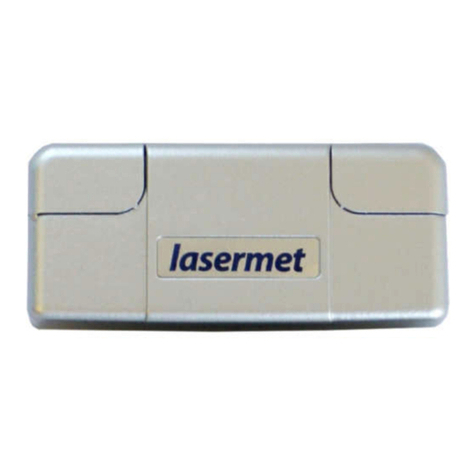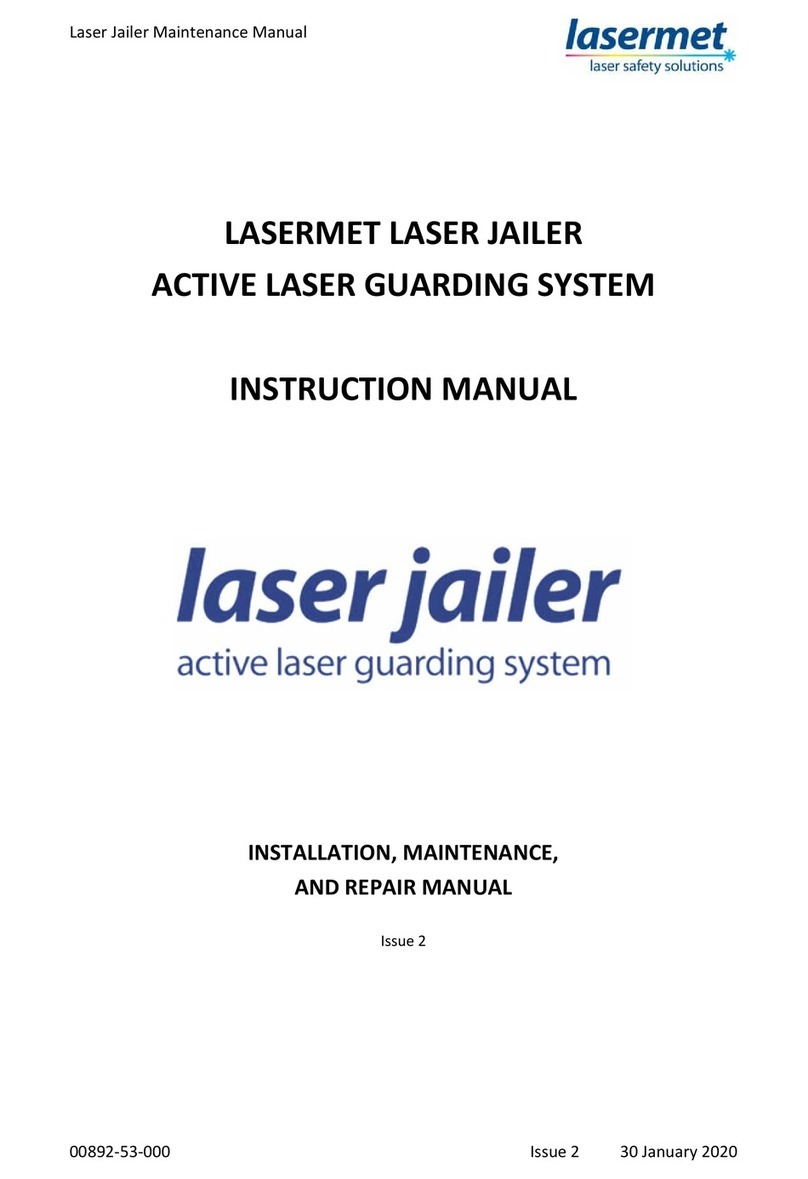
LS-20 Instruction Manual
00629-53-000 Page 9 of 18 Issue 12 19 January 2021
Detailed Pin Descriptions
The LS-20 shutter can be wired in various ways. The simplest configuration is to connect pins 10 and
12 to +24V and pin 1 to 0V. The shutter can then be operated using its buttons. Other pins may be
connected as required giving a wide variety of control and monitoring options.
The functions of each pin are given below.
1 0V
Negative of 24V Power Supply / Interlock Controller feeding shutter.
2 Monitor Contact 1 ‘Open’
Volt-free contact which is connected to pin 3 when the shutter is open. The contact is rated
at 100mA 24V maximum resistive load.
3 Monitor Contact 1 Common
Common contact for pins 2 and 4.
4 Monitor Contact 1 ‘Closed’
Volt-free contact which is connected to pin 3 when the shutter is closed. The contact is rated
at 100mA 24V maximum resistive load.
5 Monitor Contact 2 ‘Open’
Volt-free contact which is connected to pin 7 when the shutter is open. The contact is rated
at 100mA 24V maximum resistive load.
6 ‘Open’ +24V output
This pin outputs 24V when the shutter is open. It can source a maximum of 50mA resistive
load. Used to operate the ‘open’ indicator light on Lasermet’s LS-RS-20 remote switches.
7 Monitor Contact 2 Common
Common contact for pins 6 and 9.
8 Remote Open Command +24V Input
Apply 24V to this pin to make the shutter open immediately. If the Control Supply is present
on pin 12 the voltage need only be applied momentarily (approximately 1 second) as the
shutter latches open. If there is no control supply on pin 12 the shutter will remain open
until the Remote Open signal is removed. For remote button operation a normally open
pushbutton switch can be connected between this pin and pin 12.
9 Monitor Contact 2 ‘Closed’
Volt-free contact which is connected to pin 7 when the shutter is closed. The contact is rated
at 100mA 24V maximum resistive load.
10 Monitor Supply +24V
Connect this pin to an ‘always on’ 24VDC supply. The negative of this supply should be pin 1,
in common with the negative of the control supply. This pin powers the indicator lights on
the shutter and provides power to operate pins 6 and 11.






























